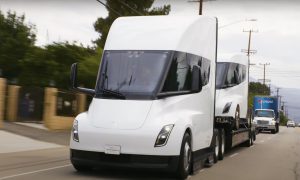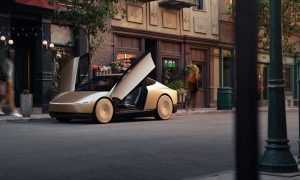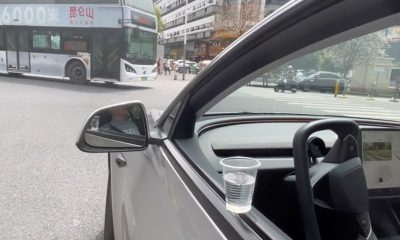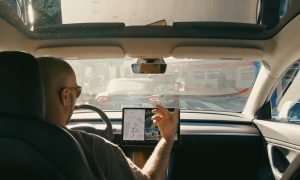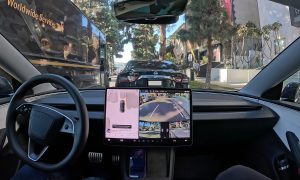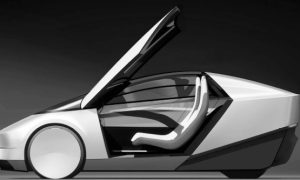News
Your Tesla will become a humanless chauffeur, summoned via app
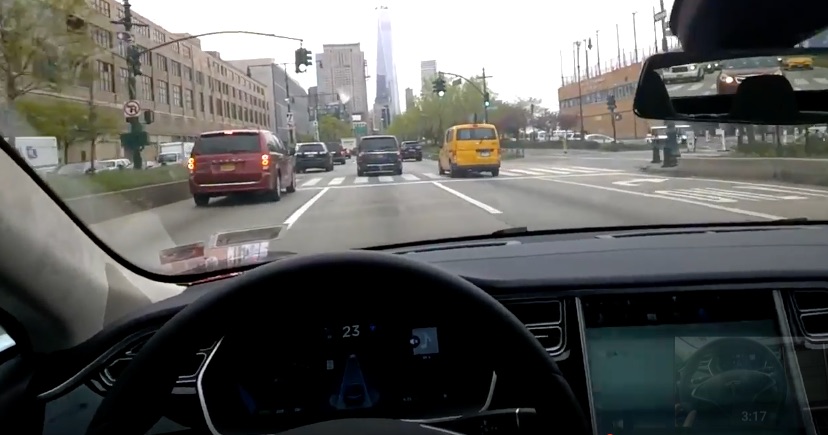
Your Tesla eases its way through the choked streets of Los Angeles and climbs the Sierra Nevada. It glitters with the lights of Las Vegas before continuing over to Yellowstone National Park, where the geysers blow and the buffalo stare from roadsides. Meandering through the Badlands and by Mount Rushmore, it pushes upward in elevation into the Rockies and then down to Denver. After the Tesla powers past the Midwest’s cornfields, it propels its way through Chicago’s multiple highway lanes, wedged between tractor trailers. In the final leg of the trip, the Tesla dips and zips through Pennsylvania’s rolling hills and maneuvers through the congested streets of Times Square, parking itself.
These Northern route stats: 3,241 miles in 54 hours, and your Tesla did all the driving for you. It was capable of seeing through heavy rain, fog, dust, and two cars ahead.
That’s the vision, or Tesla Vision, rather, of the not-so-distant future as announced by Tesla CEO Elon Musk during a press conference call on Wednesday, October 19. Outlining a future of self-driving cars, Musk set a goal for Tesla to make a fully autonomous road trip from Los Angeles to New York by the end of 2017. The trip would occur “without the need for a single touch” from the driver, including recharging the car’s battery. Owners would be able to Summon their vehicle, through a press of a button on an app, and the car would drive itself to wherever they are and pick them up – even if it’s across the country. The vehicle would charge on its own along the way without human intervention using something similar to the Snakebot that Tesla revealed last year.
“Our goal— I feel pretty good about this goal — we’ll be able to do a demonstration drive of full autonomy all the way from LA to New York. So basically from a home in LA to, let’s say. dropping you off in Times Square, in New York, having the car park itself by next year. Without the need for a single touch, including the charger.”, says Musk.
When you want your car to return, tap Summon on your phone. It will eventually find you even if you are on the other side of the country
— Elon Musk (@elonmusk) October 20, 2016
This Level 5 “full self-driving or driverless capacity” will now be available on the 2,000 cars a week that Tesla is currently manufacturing. That means the Tesla Model S and Model X vehicles in production as well as the upcoming Model 3 will have what Musk terms “Hardware 2,” which allows for full self-driving capability at “a safety level substantially greater than that of a human driver,” according to Musk. The hardware includes:
- 8 surround cameras which provide 360 degree visibility around the car at up to 250 meters of range;
- 12 updated ultrasonic sensors that allow detection of both hard and soft objects at nearly twice the distance of the prior system; and,
- a forward-facing radar with enhanced processing that provides additional data on a redundant wavelength.
The system, which has been more than a year in testing, will see continual software updates as the system learns through data collected from ‘Shadow Mode’ and self-driving algorithms are refined. Musk said that it would be some time before Tesla’s software would advance to meet capabilities of Hardware 2, so it will be disabled until it “reaches parity following full validation with Hardware 1, probably in December.” Updates are likely to occur every 2-3 months thereafter. Nonetheless, and in lieu of required regulatory approval, Musk claims that the safety level of this autonomous driving will be at least twice that of a human, or better.
Tesla’s current Autopilot system has been replaced with a newer generation ‘Enhanced Autopilot’ that will leverage the new suite of sensors to provide more precise lane keeping, lane changes without driver input, the ability to exit freeways, and an overall smoother and safer experience. Enhanced Autopilot and the Fully Self-Driving Capability, autonomous mode, is being made available through Tesla’s Model S and Model X Design Studio as optional upgrades.
News
Tesla opens massive solar Supercharger station in California
The Supercharger opened to customers ahead of Fourth of July weekend, while Tesla continues phase two of construction on the site.

Tesla has officially launched the first several Supercharging posts at a massive station in California, notably including solar canopies and grid-scale batteries to offer completely renewable charging.
Last week, Tesla announced on X that it opened the first 84 Supercharger stalls of a planned 168-stall station in Lost Hills, California. Additionally, the massive Supercharger project features 11MW of solar canopies and 10 Megapack batteries for off-grid charging powered entirely by solar energy.
Tesla completed the first phase of the project just days ahead of the busy Fourth of July holiday weekend, adding that initial construction took just eight months. In addition to the remaining charging stalls, Tesla says it’s building a set of lounge areas, renderings of which can be seen below alongside current photos of the site.
Notably, the site also includes V4 charging posts for the company’s latest available charging speeds, and it’s located near the busy junction between I-5 and Highway 46 in Kern County.
“Thank you [Kern County] and [PG&E] for collaboration and approvals,” Tesla wrote in a follow-up post.

Credit: Tesla Charging | X

Credit: Tesla Charging | X

Credit: Tesla Charging | X

Credit: Tesla Charging | X
Tesla Supercharger Maps for North America, Europe, and Asia pic.twitter.com/0U5r0XRPyo
— TESLARATI (@Teslarati) July 2, 2025
READ MORE ON TESLA SUPERCHARGERS: Tesla launches ultra-fast V4 Superchargers in China for the first time
Testing at the LA Diner, plus Musk update on potential Tesla solar Gigafactory
The huge Tesla Supercharger station completed phase one of construction fairly quickly, especially given how long Tesla has been working on its unique Los Angeles diner, drive-in, and Supercharger location. Still, the company was seen performing some testing at the nearly-completed charging station earlier this month, and will reportedly be holding a job fair.
Elon Musk also responded on Monday morning to a post on X, suggesting that Tesla is “thinking about” building a U.S.-based solar Gigafactory in order to help support increased power needs with AI growth, and to bolster domestic solar production.
Tesla is building a new UFO-inspired Supercharger in the heart of Alien country
News
Tesla driver walks away from major accident with minor injuries
The driver sustained only minor injuries, and the exact cause of the crash remains under investigation.

The driver of a Tesla Model Y survived and walked away from a harrowing accident on Monday in California, only sustaining minor injuries despite the vehicle being impaled by a guardrail.
On Monday morning around 4:34 a.m., the Los Banos division of the California Highway Patrol (CHP) responded to the accident on I-5 near Panoche Road, involving a 23-year-old in a Tesla Model Y. According to a post on social media, the driver veered off the road for unknown reasons in the northbound lane, before crashing directly into the guardrail and impaling the vehicle.
You can read the full message and photos from Los Banos CHP below, as were shared in a Facebook post on Monday afternoon.
This morning a Tesla model y was traveling in the #1 northbound lane of I-5 north of Panoche Rd. For unknown reasons driver allowed V-1 to veer off the roadway, travel through a dirt center divide, and crashed into the fixed metal guardrail. Lucky for the driver he only sustained minor injuries and was able to walk away. Driving a vehicle requires 100% attention to the road. Avoid distractions and focus on driving.

Credit: CHP Los Banos (via Facebook)

Credit: CHP Los Banos (via Facebook)

Credit: CHP Los Banos (via Facebook)
In a statement to SFGate, CHP officer Myles Anderson said that the driver only sustained minor injuries, while no arrests are made and drugs and alcohol are not suspected to have been involved. The report also notes that Tesla’s “cruise control and lane assistance features” were activated, according to Anderson. However, it’s not entirely clear if this is referring to Supervised Full Self-Driving (FSD), or to the cruise control and lane assist features baked into Autopilot.
At the time of writing, CHP has not yet responded to Teslarati’s request for clarification and additional details on the matter.
Tesla Crash Safety Ratings across its lineup: pic.twitter.com/ny30R7ceji
— TESLARATI (@Teslarati) July 1, 2025
READ MORE ON TESLA SAFETY: Tesla rolls out crucial new safety feature aimed at saving children
The news comes after Tesla has touted its vehicles as incredibly safe for many years. In December, for example, the company highlighted receiving top safety scores from regulators on four different continents throughout the world, including from the National Highway Traffic Safety Administration (NHTSA) and the Insurance Institute of Highway Safety (IIHS) in the U.S.
Tesla has also listed the goal of making its vehicles the safest on the road throughout the years, both in the overall design of its vehicles and in its Autopilot and Full Self-Driving (FSD) programs.
Tesla Model 3 ranks as the safest new car in Europe for 2025, per Euro NCAP tests
Investor's Corner
Cantor Fitzgerald maintains Tesla (TSLA) ‘Overweight’ rating amid Q2 2025 deliveries
Cantor Fitzgerald is holding firm on its bullish stance for the electric vehicle maker.
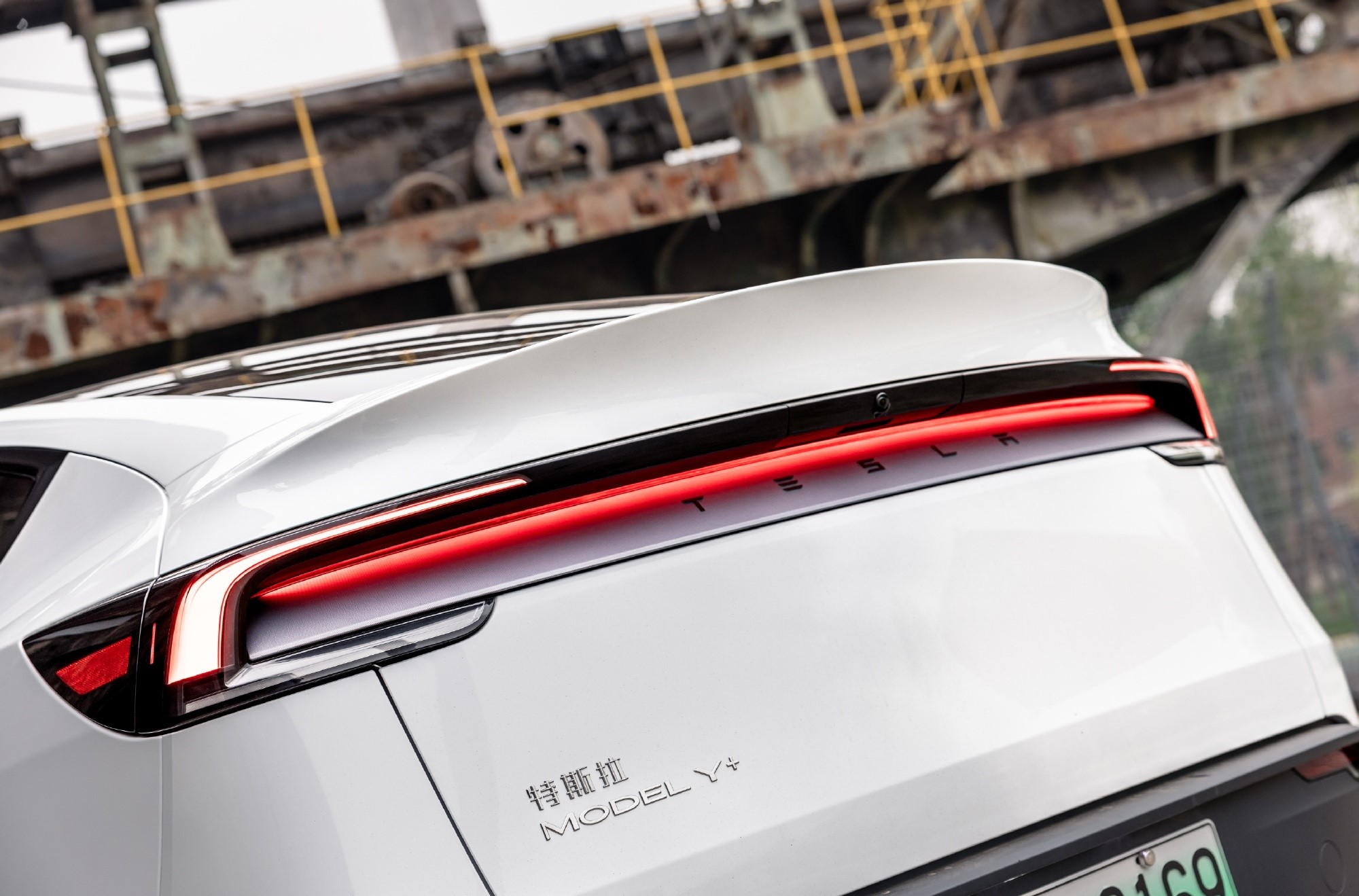
Cantor Fitzgerald is holding firm on its bullish stance for Tesla (NASDAQ: TSLA), reiterating its “Overweight” rating and $355 price target amidst the company’s release of its Q2 2025 vehicle delivery and production report.
Tesla delivered 384,122 vehicles in Q2 2025, falling below last year’s Q2 figure of 443,956 units. Despite softer demand in some countries in Europe and ongoing controversies surrounding CEO Elon Musk, the firm maintained its view that Tesla is a long-term growth story in the EV sector.
Tesla’s Q2 results
Among the 384,122 vehicles that Tesla delivered in the second quarter, 373,728 were Model 3 and Model Y. The remaining 10,394 units were attributed to the Model S, Model X, and Cybertruck. Production was largely flat year-over-year at 410,244 units.
In the energy division, Tesla deployed 9.6 GWh of energy storage in Q2, which was above last year’s 9.4 GWh. Overall, Tesla continues to hold a strong position with $95.7 billion in trailing twelve-month revenue and a 17.7% gross margin, as noted in a report from Investing.com.
Tesla’s stock is still volatile
Tesla’s market cap fell to $941 billion on Monday amid volatility that was likely caused in no small part by CEO Elon Musk’s political posts on X over the weekend. Musk has announced that he is forming the America Party to serve as a third option for voters in the United States, a decision that has earned the ire of U.S. President Donald Trump.
Despite Musk’s controversial nature, some analysts remain bullish on TSLA stock. Apart from Cantor Fitzgerald, Canaccord Genuity also reiterated its “Buy” rating on Tesla shares, with the firm highlighting the company’s positive Q2 vehicle deliveries, which exceeded its expectations by 24,000 units. Cannacord also noted that Tesla remains strong in several markets despite its year-over-year decline in deliveries.
-

 Elon Musk1 week ago
Elon Musk1 week agoTesla investors will be shocked by Jim Cramer’s latest assessment
-

 News2 weeks ago
News2 weeks agoTesla Robotaxi’s biggest challenge seems to be this one thing
-

 News2 weeks ago
News2 weeks agoWatch the first true Tesla Robotaxi intervention by safety monitor
-

 Elon Musk1 week ago
Elon Musk1 week agoA Tesla just delivered itself to a customer autonomously, Elon Musk confirms
-

 News2 weeks ago
News2 weeks agoTesla Robotaxi rollout proves that Elon Musk still delivers, even if it’s late
-

 Elon Musk2 weeks ago
Elon Musk2 weeks agoxAI welcomes Memphis pollution results, environmental groups push back
-

 Elon Musk2 weeks ago
Elon Musk2 weeks agoElon Musk commends Tesla team on successful Robotaxi launch
-

 Elon Musk2 weeks ago
Elon Musk2 weeks agoElon Musk confirms Tesla Optimus V3 already uses Grok voice AI


